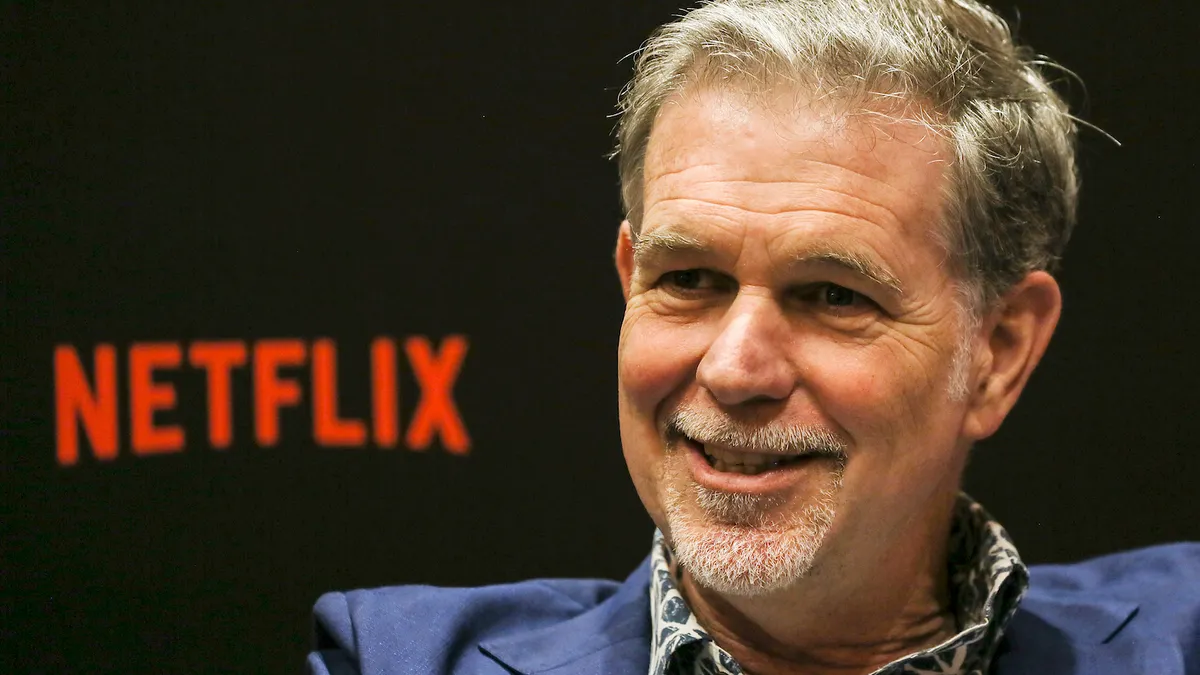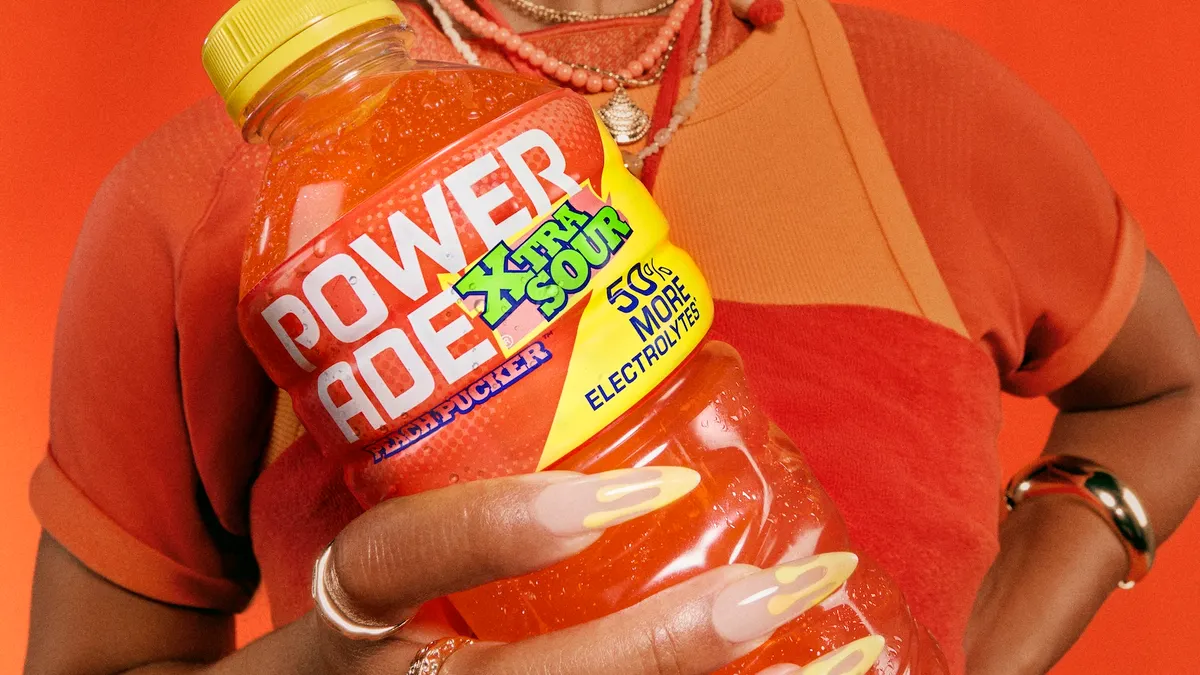UPDATE: May 10, 2022: Ads could be coming to Netflix before the end of the year, The New York Times reported, citing sources within the streaming company. The roll-out would be quicker than the amount of time — "a year or two" — that co-CEO Reed Hastings previously suggested the company would take to figure out how to implement an ad-supported plan.
On a Tuesday call about its Q1 2022 earnings, Netflix executives announced the company would begin looking into how to bring advertising to its platform. The move reverses the company's longtime aversion to ads and comes after the streamer lost subscribers for the first time in over a decade. Now, Netflix could finally open itself to advertising as it faces stiff revenue growth headwinds and has seen its stock plummet nearly 30% since the April 19 earnings announcement.
"Those who have followed Netflix know that I've been against the complexity of advertising and a big fan of the simplicity of subscription," co-CEO Reed Hastings said on the earnings call. "But as much I'm a fan of that, I'm a bigger fan of consumer choice."
An evolving marketplace
Hastings said Netflix will look to figure out how to implement low-end, ad-supported plans over the next year or two. The course correction comes just weeks after CFO Spencer Neumann said advertising was not currently in the company's plans, but seemed to open the door to a change by warning, "never say never." The abrupt shift could reflect Netflix's recognition that the streaming space it has dominated for years is evolving, and that the company needs to change with the times if it is to remain a key player.
After years of growth, Netflix faces a panoply of problems that advertising could help it solve. In a letter to shareholders, the company noted the pandemic-related boost had obscured underlying issues that are impeding growth, including increased competition from other streaming platforms and the high number of households that share accounts — a number it estimates at over 100 million. And while tough earnings results have spurred the decision, experts have been pushing Netflix to adopt ad-supported video on demand (AVOD) for years.
"Netflix's move to offering an AVOD tier to retain and acquire subscribers is way overdue. Most major content players already offer an ad-supported tier or are heading in that direction," Marcella Milliet Sciorra, CMO of healthcare demand-side platform DeepIntent, said in emailed comments.
The move will put Netflix at parity with competitors including HBO Max, Amazon's Freevee (the company's recently rebranded IMDb TV offering) and Disney+ (which announced it will introduce an ad-supported tier later this year), and reflects growing consumer demand for cheaper, ad-supported content. Two-thirds of CTV viewers in the U.S. prefer to see ads if they can pay less for the service, according to a recent survey conducted by DeepIntent and LG Ads Solutions. It could also be attractive for advertisers who have followed consumers to CTV and AVOD channels.
"Ad-supported streaming has exploded in popularity due to growing consumer apathy regarding paid subscription services," Vikrant Mathur, co-founder of AVOD platform Future Today, said in emailed comments. "The entrance of SVOD services such as Netflix in the ad-supported space confirms the opportunity that this surge in viewership creates for both publishers as well as brands, and should help expedite the migration of budgets away from linear TV into streaming."
Netflix's introduction of ads could help marketers tap into a new supply of inventory, offering greater diversity and scale for CTV campaigns, Milliet Sciorra noted. It could also be a boon for the ad-tech industry, as Netflix's Hastings suggested the company could look to other providers to deliver its ad experience.
"We can be a straight publisher and have other people do all of the fancy ad-matching and integrate all the data about people. So we can stay out of that and really be focused on our members creating that great experience and then again, getting monetized in a first-class way by a range of different companies who offer that service," he said on the earnings call.
Curtain falls on act one
However, any ad-supported plan by Netflix would be coming as the type of data-driven advertising Hastings alluded to is becoming more difficult amid a tightening data privacy landscape. Plus, the delay in rolling out such advertising opportunities comes as Netflix's once-storied data and algorithm advantage has been erased as conglomerates with deeper troves of consumer data, like Amazon and Disney, have entered the streaming wars. Netflix only has one touch point with the consumer, and the launch of a Two Thumbs Up feature suggests its data advantage is shrinking, according to Andre Swanston, senior vice president of the media and entertainment vertical at TransUnion.
"They don't have data or time to try to build out targeting, measurement, attribution and identity resolution capabilities needed to compete. All of these capabilities can be leveraged from outside vendors and partners (much like most of their competitors do already). They just need to focus on having content that keeps audiences engaged (and thus watching more ads)," Swanston said in emailed comments.
Netflix's move seems inevitable as the streaming landscape shifts into its next phase. The company's rough earnings report, coming on the heels of disappointing numbers by streaming platform Roku, demonstrates that a first act defined by cord-cutting and content catching up to consumer preferences has ended, and one driven by SVOD that is cheaper, bundled and offset by ad-supported plans, said Tal Chalozin, co-founder and CTO of Innovid, in emailed comments.
Despite the challenges of rolling out an ad-supported tier, the move could be a key component of Netflix getting back on track.
"If Netflix succeeds in building an ad revenue stream and can get a handle on rampant password sharing, there's a chance they can increase margins, and current average revenue per user (for U.S. and Canada) above $14.78, making shareholders happy, and advertisers thrilled with the opportunity to engage with consumers watching great content," Eric John, vice president of the media center at IAB, said in emailed comments.





















